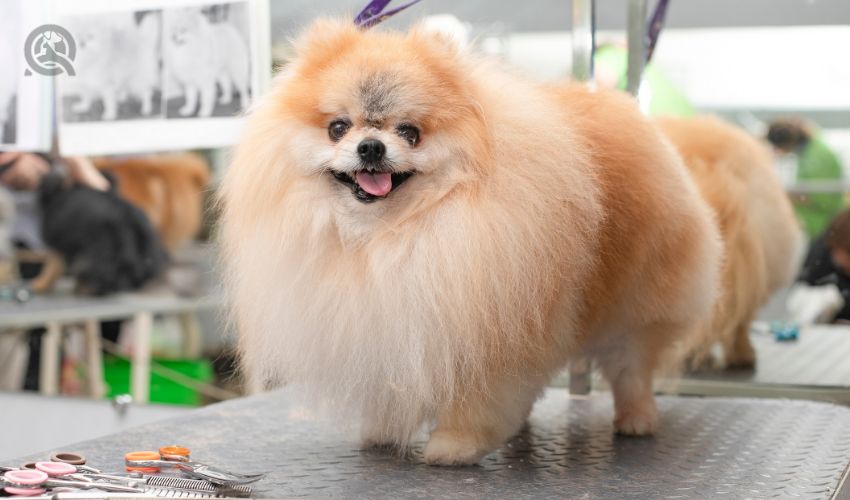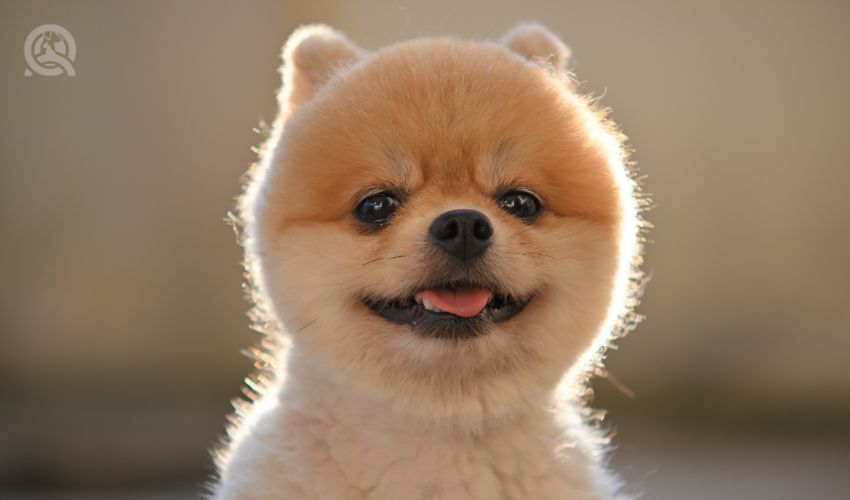Defining Groomer Speak: Cute but Confusing Terms
When I worked as a pet groomer, I learned how to speak grooming language and how to interpret my clients needs and desires. Not all groomers can translate dog owners wishes into great haircuts, however. I sympathize with pet owners and groomers who have a hard time understanding each other. There are various terms in grooming, and groomers use words that are unique to their trade.
I have defined here some of the terminology of the dog grooming world to help facilitate effective communication on both sides! Better communication can make it easier for dog owners to get a more unique haircut for their dogs.
There is a big difference between dropping your dog off for a generic haircut and bath and bringing them in for a beautiful, made-to-order, fancy haircut. You won’t get the cut you want if you don’t know how to communicate what you want to your groomer. Sometimes there is confusion and disappointment when pet owners ask for certain types of cuts and it doesnt come out the way they wanted.
It’s a good idea to build a relationship with your dog groomer; talk to them and ask questions so you both understand what you would like your pet to look like.
Heres a sneak peek of the topics this article covers:



Shihtzu with a teddy bear cut using an #A comb.
Teddy bear and puppy cuts are essentially the same thing.
Do you see in the pictures how I labeled one a puppy cut and the other a teddy bear cut? They look the same and are the same. In fact, the difference between a 3-3/4 blade and the #A comb is less than half an inch. Only the faces are different and that is only due to the owners preference.
This poodle mixs mommy knows how to communicate, and he gets this same custom cut every time: a #5 kennel clip with poodle feet, poodle face, with a short pier-type mustache. Never shorten the tail!
The kennel cut has its origin in the idea that when not showing or otherwise using your dog in the capacity for which he is bred, you would keep his coat very short.
Short coats are easier to manage and less maintenance, which can be desirable in the “offseason.” Most hunting dogs, for example, are “kenneled” in the “offseason.” Thats how the expression “kennel cut” was born. It actually does not indicate a particular length, except for short. In my book, that is 1/16th of an inch (#10) up to about 1/3 of an inch (#5).
This type of cut is very practical for dog owners with animals that have profuse amounts of coat that they need while hunting to protect their bodies, for instance, but which requires too much up-keep when the hair is not needed.
I put up two pics of kennel cuts so you could see that it is a short cut on the body with lots of options for the head and tail.


Cocker cut. Sorry not a good pic of the body, but the head detail is excellent.
Breed cuts obviously vary greatly from breed to breed. Most groomers can give your dog their proper breed cut if that is what you are looking for.
Don’t assume that you can accomplish the pattern yourself. The proper breed haircut is established by the AKC (the American Kennel Club), and there are many good breed pattern books on the market. They are not hard to do if you know the correct techniques, but if you are looking for perfection, you must start with an almost perfectly bred, show-quality animal.
As for show grooming, there are few groomers who will attempt to do show-quality grooming for you. For most of us, it is not cost-effective to put in the time and effort.
If you need a show-quality groom, please seek out a groomer that advertises this and has years of experience in the show arena. They may want to keep your dog for a few days and will charge four to five times what a pet groomer will charge, but your pet will be show-ring ready at the end of the process.
This refers to shaving between the toes and over the entire foot so that it is bald or has barely any hair left.



This means shaving the face, cheeks, and muzzle to a nearly bald length, just like poodle feet.
Introduction to The Teddy Bear Cut
The Teddy Bear Cut is one of the cutest cuts – as well as one of the most requested. It features a rounded face, with a short clip to the body and legs, and rounded feet. Depending on the density of the coat, longer hair may be left on the legs if the coat is thin. This will help give the cut a more balanced look. Sometimes, especially on older dogs, the coat is thinner on the body and thicker on the legs. Thus, it may be necessary to compensate for these differences.
QC Pet Studies’ online Dog Grooming certification course features this cut in their “Pet Cuts” booklet. Here, you get very thorough instructions on how to achieve a pristine Teddy Bear Cut. I personally refer to this booklet from time to time – specifically, when I have questions while working on a dog that has coat challenges, such as the ones mentioned above.
To achieve the perfect Teddy Bear Cut, make sure you have completed all of the prep work first. This includes:
When drying, make sure to blow out as much curl as possible (if you ‘re working with a curly coat). This is an important step in order to attain the look you want, which is an even coat length on the dog. Then choose a comb that’ll give you the length of coat your client prefers.

Once the dog is completely dry, you can begin clipping the coat. Start at the base of the skull and run your clippers down the topline, to the tail. Next, clip the hips and beneath the tail. I like to clip both rear legs on the outside and the inside, before clipping the sides of the body. Personally, I feel this gives me a better opportunity to ensure an even length all over. It’s my personal preference.
Once the dog’s hips and legs are complete, I then move to the sides. Once that’s completed, I proceed to the neck, shoulders, front legs, and chest. Complete the body and legs by giving the dog nice, rounded feet. You can do this using your rounded shears.
Don’t forget to fluff the fur between the toes! This way, you can trim off any really long hairs and blend them into the tops of the rounded feet. After this, use your metal comb to fluff the fur all over the body and legs. During this part of the process, you can also trim off any stray or uneven areas using your blending shears. I like to use my rounded shears and my blending shears to blend the sides into the underside of the body. I’ve found that this gives the dog a nice, rounded shape.

Once you’ve blended and shaped the body, legs, and feet, it’s time to complete the Teddy Bear face! The face should be rounded and full when looking at it from the front. This includes the top of the head, sides of the cheeks, and the hair on the chin (a.k.a. the “beard”). When combined together, all of these elements give the appearance of the soft, rounded Teddy Bear Cut.
To reveal expressive eyes, first comb the hair on the top of the head forward. Using your straight scissors, rest them on the bridge of the dog’s nose. Then, with your scissors angled straight up, make the cut level with the stop. Trim the hairs on the top of the nose, close to the eyes. This will remove any hairs that could obstruct the dog’s vision and detract from the desired expressive look.
Fun fact: trimming out tear-stained hairs will also brighten the eyes! So, trim back any long or scraggly hair that may appear on the outside of the eyes. If these are left, it gives the dog a sad, droopy expression… and that’s not what we’re looking for!
I like to use my rounded scissors to shape the cheeks and jaw. Next, I blend the jawline into the base of the ears. Using my blending shears, I make a smooth transition from the head into the neck. Fluff the hair periodically on the head and face to ensure you can trim off any scraggly hairs that disrupt the rounded look. Remember: you’re trying to achieve a rounded, symmetrical shape!
Trimming the top of the muzzle should be done with curved scissors and blended into the beard. Finally, blend the back of the neck by tilting the dog’s head forward and using your rounded scissors (or your blending shears) to create a slight arch that blends into the body.
Sanitary Area, Poop Shoot, and Maternity Cut
These terms refer to shaving the hair away from the groin and genitals, including the rectum, for sanitary reasons.
A maternity cut involves shaving the entire belly, from the armpits to the groin, to expose all of a female dogs nipples. This makes it easier to nurse puppies and will assist the mother in keeping herself a little cleaner.
My favorite top knot to do! I call this the pom-pom top knot. I use my Greyhound comb to gather the hair, use rubberbands for braces to hold hair, then put in bows afterwards.
This is the hair on the top of the head. We usually only refer to it as a top knot if we are talking about a poofy poodle style or when putting a bow in the hair of a long-haired dog such as a Yorkie or Shih Tzu.
How to groom your dog in a teddy bear trim.
We frequently get asked “When should I take my puppy to get groomed for the first time?” and “What type of haircut should I ask for to get the perfect teddy bear look?” Since we are not professionals when it comes to grooming we thought we would ask someone who is. We interviewed our grooming artist, TeAnna who is the owner of Ruffledales Pet Resort & Paw Spa and asked her several of those questions.